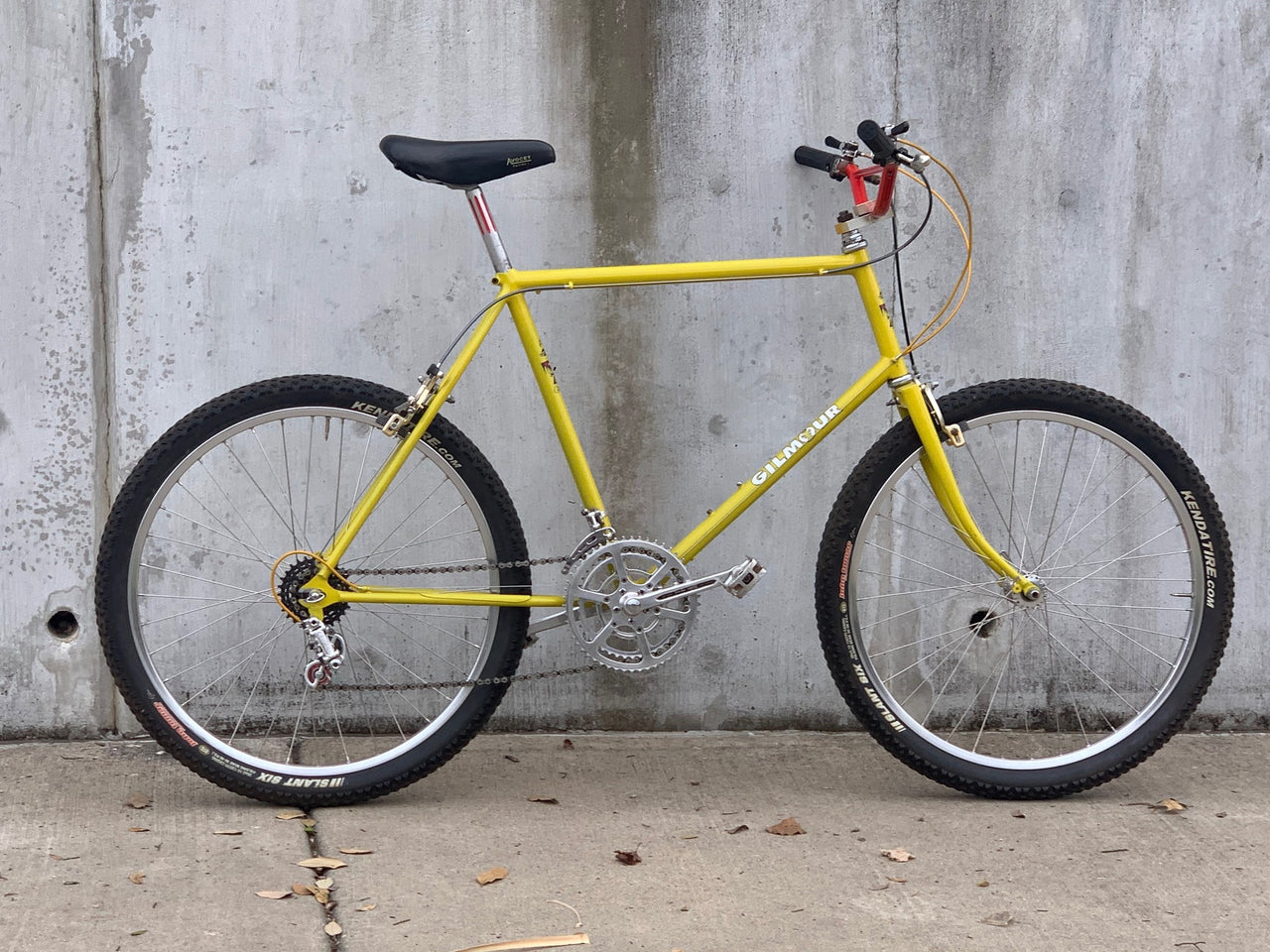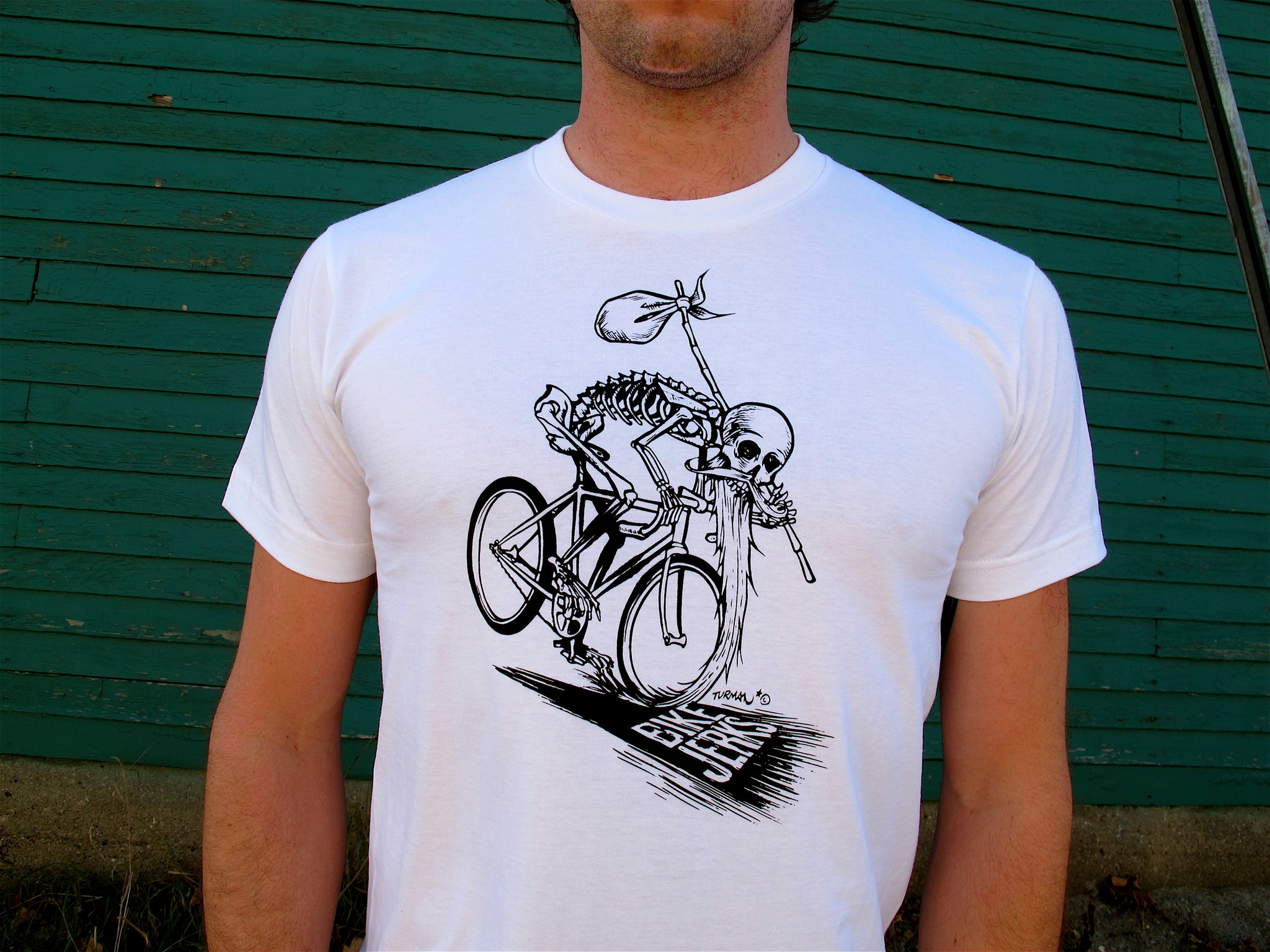
Mountain Biking History: The First Purpose Built MTB? 1976 Andy Gilmour Cycle Truck
Recently on one of the vintage MTB Facebook groups I frequent I came across a stunning bicycle and claim.... That bike was a yellow 1976 Andy Gilmour made mountain bike.
The popular narrative is that Joe Breeze created the first purpose built mtb's in the late 70's with his Breezer Series I's. Here's a quote from the Marin Mountain Bike Museum website: "His Breezers were the first all-new bikes built with rugged frames specifically for mountain biking (1977 and 1978)."
And here was a road racing frame maker in Tucson, Arizona beating the Marin boys to the punch. What's the deal? And why is this history so unknown?
Well first, let's decide what makes something a purpose built mountain bike. The best delineator I've heard yet is the move away from drum and coaster brakes to rim brakes on a new construction 26" bicycle.
I spoke with Andy regarding the yellow bike and a green one I was soon to learn about, and he was very casual about the whole thing. I'm all "Holy heck, you invented the mountain bike!" and his response was "No one invented the mountain bike. The Italian army was off-roading at the turn of the century." It was clear that Mr. Gilmour couldn't care less about claims or the perceived glory that went with them. Which is pretty dang cool if you ask me.
If you look at the two Gilmour bikes below, it's pretty dang obvious that they are most definitely purpose built bikes with rim brakes and 26" wheels. The yellow, which has been refurbished, utilizes bmx brakes and the green one, also having been refurbished, was built to use Mafac Canti's.
The green bike was called by Andy a "Cycle Truck," which tracks as the term mountain bike hadn't yet been coined by Charlie Kelly and Gary Fisher. Don't confuse that with the modern term "cycle truck" which is used most often for a front loader utility bicycle. Though Andy's Cycle Truck also had utility baked in, as that massive rear rack was at one time brazed on, and later cut off and turned into a bolt on piece.

Image provided by Andy Gilmour
It's a pretty interesting bike, check that seat mast, and the parallel 73/73 head and seat tube angles. Decades after this bike was originally built it was updated with the ability to run a Rohloff hub at the same time the rack was modified. Also note the multi-plane fork crown. This according to Andy was typical of the "Cycle Trucks" he was building at the time. Happily the original owner still rides it, spotted here at a street bazaar.
Now let's dive into the yellow one, owned by J Garrison. All photos provided by him. This bike has been refurbished and it's not clear to me what if any of the parts are original. According to Jack he purchased it from a long haul truck driver who was the first owner.

Notice the varying head tube and seat tube angles on this one. If that's a 73 headtube angle, I'm guessing that the seat tube is around 71 or so. Also note the lack of the seat mast, bi-plane fork crown (which Andy indicated wasn't typical of the off-road bikes he was building at the time, as he was doing three or four plane forks as on the green bike), and of course the track ends with added derailleur hanger (same as green one). There is absolutely no doubt in my mind that this frame has the silhouette and attributes to be immediately recognized as a mtb.








So boom, there you go, two 1976 built Gilmour's that are most definitely, positively, mountain bikes that are earlier than the reported 1977 Joe Breeze built frames that traditional MTB history and sources of record will tell you were the first.
Did we just blow the lid off the whole thing? Is there a huge Marin-centric bias because the mountain bike industry (first mountain bike company, first mtb media) was born there, and it was just good business to play up the accomplishments of folks from that scene? Was the modern MTB truly born in Arizona? Should they all be called "Cycle Trucks?"
Beats me, but what I can tell you is that Andy Gilmour deserves some flowers because these are truly extraordinary and forward thinking bikes that should be much bigger pieces of the popular narrative surrounding the evolution of dirt-centric cycling. Friggin' 1976, man!
Quick links
Contact
FAQ
Privacy policy
Refund policy
Terms of service
Shipping policy

